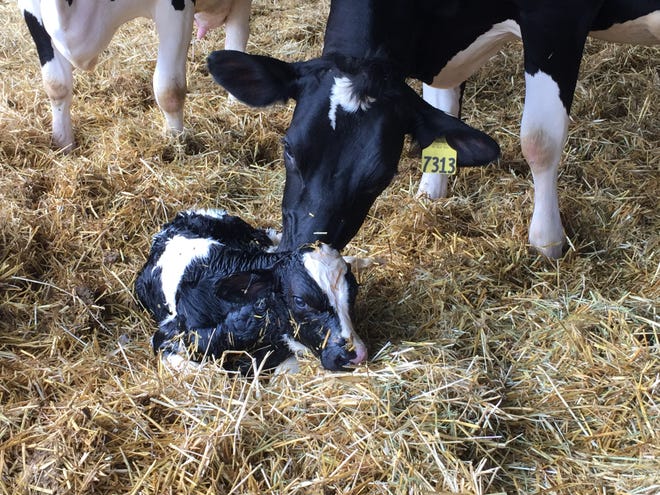Do you know the score when it comes to calf vitality?

Superior calf performance begins during the birthing process in the maternity pen.
Based on the 2017 USDA NAHMS Survey, five to seven percent of all newborn calves are stillborn or die within the first 48 hours.
To improve calf survival after birth, we must follow practical, consistent calving protocols and provide a clean, dry calving environment. As caretakers we need to understand the calving process so we can identify early when a cow is in distress and needs intervention or assistance in calving. Finally, the use of a calf vitality score can be used to identify early calves that have strong or low vitality.
There may be consequences of a difficult birth including pain and fatigue, vertebral and rib fractures, hypoxia, acidosis, and thermoregulation. Each of these could have a long-term effect on the calf’s overall health and productivity.
To help identify a calf’s vitality, University of Guelph graduate researchers developed the Calf VIGOR Vitality Score Card. A similar concept to the Apgar Score used for human newborns, the VIGOR score evaluates the health and well-being of a newborn calf at birth.
The VIGOR Score is based on 10 categories, each given a score of 3 to 0, allowing the caretaker to quickly assess the calf focusing on Visual appearance, Initiation of movement, General responsiveness, Oxygenation, and Rates (respiratory and heart).
Visual appearance is based on identifying normal, slight, moderate, and severe amounts of meconium staining, swelling of head, and tongue protrusion. Initiation of movement focuses when the calf attempts to stand, ideally within the first 30 minutes of life. The longer it takes to stand, the lower the score. General responsiveness is identified by the calf’s reaction to eye and tongue reflex, and head shake in response to straw in the nasal cavity. Suckling reflex is also an important general response to identify.
Oxygenation helps determine how much oxygen is circulating in the body by looking at the color of the calf’s gums. Finally, anything above or below a normal 80 to 100 heartbeats per minute or 24 to 36 respiration rate per minute is abnormal and given a lower score.
By giving a score of 3 to 0 within the 10 categories of VIGOR (visual appearance, initiation of movement, general responsiveness, oxygenation, and rates), and adding them together, we can have a general value for the calf’s vitality, or VIGOR. Calves with a score of 26 to 27 will have excellent vitality, 23 to 25 very good vitality, 21 to 22 good vitality, 17 to 20 marginal vitality, and scores less than 17 translates to poor vitality for the calf. To assist caretakers in the use and recording of the VIGOR Score, UW School of Veterinary Medicine now has an iOS App which can be found at https://www.vetmed.wisc.edu/fapm/svm-dairy-apps/.
Knowing the calf’s VIGOR Vitality Score, one can make proper management decisions to help her succeed. There are a couple of options to consider when faced with a low VIGOR scoring calf. University of Guelph Research (2016) suggests providing meloxicam to help calves recover from difficult births.
Meloxicam is a non-steroidal, anti-inflammatory drug (NSAID) providing pain relief and reduce inflammation. When calves assigned a low newborn VIGOR score received meloxicam, their VIGOR score and suckling reflexes improved when compared to calves not receiving the drug after an assisted birth. Calves treated with meloxicam also had greater milk intakes leading to greater average daily gain. Please note: The use of meloxicam or any NSAID is only permitted through a Veterinary-Client-Patient-Relationship (VCPR).
Another strategy is the use of caffeine. Caffeine has been used in pre-tern human infants with apnea for many years and is an effective stimulant. Dr. Sheila McGuirk, UW-Madison School of Veterinary Medicine Professor Emeritus, suggests giving one bottle of an energy drink (such as 5-Hour Energy) to calves orally, providing between 100 to 200 mg caffeine. More research is required, however there are many anecdotal reports of dull calves responding to caffeine and becoming alert within 15 to 30 minutes.
The key when managing calves with low VIGOR is to help them improve their vitality by increasing their suckling, which can increase milk consumption providing the needed energy to support body functions including growth and immune system.

Tina Kohlman is the UW-Madison Extension Dairy & Livestock Agent for Fond du Lac County
